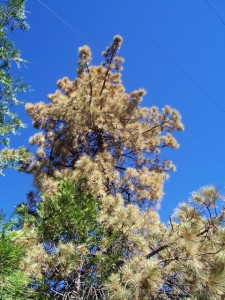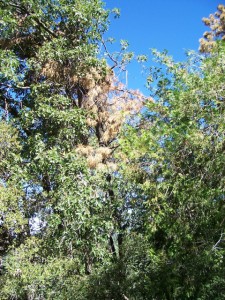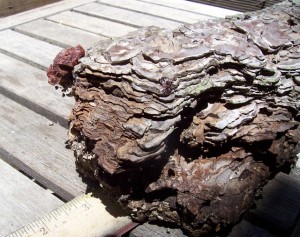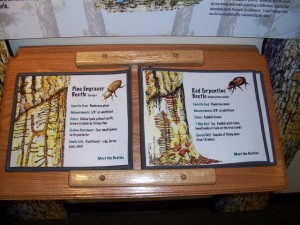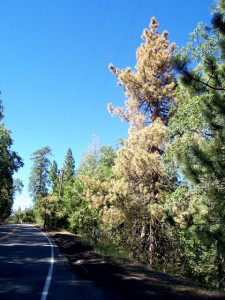No Stopping Biting Flies
July 4, 2011By Marcia E. Gawecki
As summer settles in Idyllwild, there is one formidable nemesis. Actually billions of them: biting flies.
They can come upon you without warning, leaving red welts that sometimes itch for days. Instead of spraying insecticides, some Idyllwild locals are just staying inside.
“I was raking the yard and one bit me in the hand,” said Dan Carpenter, a local from Fern Valley. “It swelled into the size of a walnut for a couple of days.”
Others who are trying to abate their yards have changed their schedules to raking only in the early morning or at dusk, before the flies really became a nuisance.
“I’ve never seen the flies so bad,” said Lindsay, a counselor from San Francisco who has worked at the Idyllwild Arts Summer Program for the past three years.
During Family Camp this week, she said they’re moving a lot of activities inside because of the flies.
“We used to host dinners for the families under the canopy in the Holmes Ampitheater, but the flies are too annoying,” she said.
Although most Family Camp members at Idyllwild Arts have been coming back year after year, they won’t be disappointed at the change, Lindsay said.
“Bugs are part of the camp experience,” she said. “They understand that.”
When we asked those at the Idyllwild Ranger Station about the flies, they didn’t have any new answers.
“We had a wet spring, so that’s why there’s more flies around,” said one of the volunteers at the front desk. “We just put on Off!”
Insect repellants like Off! only work for a short time, claimed another local.
“On fly bit me right through my shirt,” he said, exposing a red welt that looked like chicken pox.
Domestic pets are not immune to the biting flies either. They swarm, biting their backs and causing them to jump. Sherman, the horse on Hwy. 243, has had a hood on every day.
One woman who was out raking her yard with her two cats tried to offer them some relief. She didn’t want to put Off! (made for humans) onto their fur, but sprayed on cat tick repellant instead.
“But that only worked for a short time until the cats rolled into the dirt and licked it off,” she said.
Yet, the Rotary’s Fourth of July Parade on Monday morning will have some respite.
Weather conditions are calling for cloudy skies with a chance of thunderstorms, said Sue Westphal, as she walked her dog, Sam.
Copyright 2011 Idyllwild Me. All rights reserved.
Published on: Jul 4, 2011 @ 16:58



